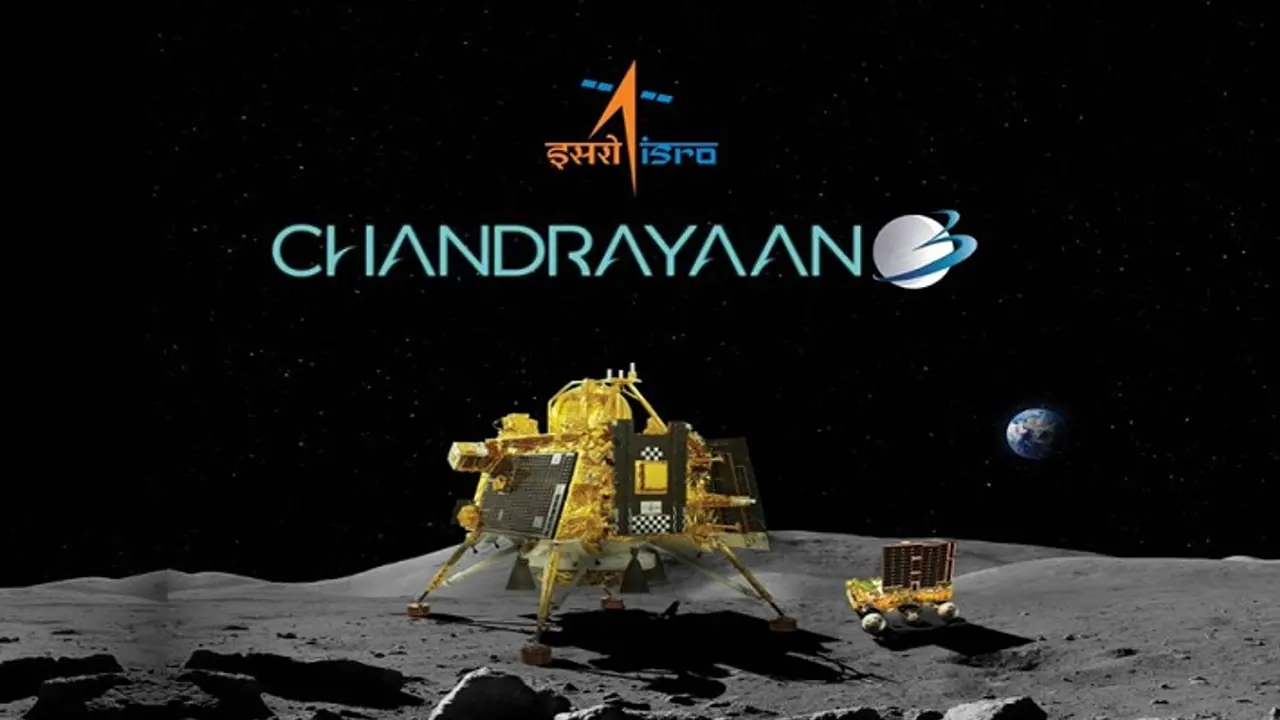Chandrayaan-3's Moon Landing: During the powered descent, the Vikram lander rapidly descends towards the moon's surface at an astounding velocity of 1.68 km per second, equating to approximately 6048 km per hour—nearly ten times the speed of a conventional airplane.
In a matter of hours, the nation will collectively experience one of its most nerve-wracking moments—an excruciating twenty minutes as the Vikram lander undertakes a daring soft landing on the moon's surface.

India's Chandrayaan-3 stands poised to etch its name in history as it ventures to execute the unprecedented feat of gently placing the Vikram Lander, accompanied by the Pragyaan rover, near the moon's southern pole. This climactic final phase has been aptly dubbed the "twenty minutes of terror," likened to the nail-biting intensity of a tight T-20 cricket match.
Following its remarkable ascent, ISRO's Bahubali rocket, also known as the Mark-3 launch vehicle, smoothly propelled Chandrayaan-3 into orbit. The spacecraft then embarked on a series of elliptical orbits around Earth, progressively accelerating as it gained velocity.
On August 1, Chandrayaan-3 commenced its 3.84 lakh km journey toward the moon. By August 5, the Chandrayaan-3 satellite had skillfully maneuvered itself into the moon's gravitational embrace, gently easing into lunar orbit. This positioning within the moon's orbital sphere allowed Chandrayaan-3 to undergo several days of meticulous stabilization, ensuring its readiness for the upcoming challenges in its extended lunar sojourn.
Executing a pivotal and intricate operation, the propulsion module and the Vikram lander, along with the Pragyaan rover, executed a separation maneuver on August 17 while the satellite was situated in a 153 km by 163 km orbital configuration. The propulsion module continued its trajectory around the moon, maintaining a 153 km by 163 km orbit.
Subsequently, the Vikram lander embarked on a transition to a closer proximity to the moon's surface, adopting a 134 km by 25 km elliptical orbit. This alteration served as a precursor to the commencement of the powered descent phase. This process, executed successfully during Chandrayaan-2, marks a notable achievement for India.
On the day of the impending landing, the much-anticipated "twenty minutes of terror" ensues, comparable to the suspenseful climax of a T-20 cricket match. Triggered by commands emanating from Bengaluru, the Vikram lander initiates its descent towards the lunar surface, embarking on this phase from an altitude of 25 km.
Chandrayaan-3: Meet the brilliant minds behind the mission
During the powered descent, the Vikram lander rapidly descends towards the moon's surface at an astounding velocity of 1.68 km per second, equating to approximately 6048 km per hour—nearly ten times the speed of a conventional airplane.
Subsequently, the Vikram lander engages its engines in a controlled manner to decelerate, navigating the challenging task of reducing speed while maintaining a nearly horizontal orientation relative to the moon's surface. This phase, termed the "rough braking phase," spans approximately 11 minutes.
Initiating a sequence of maneuvers, the Vikram lander undergoes a transformation to assume a vertical orientation in relation to the lunar surface, signifying the commencement of the 'fine braking phase'.
It was during the 'fine braking phase' of the Chandrayaan-2 launch that the Vikram lander unfortunately veered off its intended course and veered into an uncontrolled tumble that led to its subsequent crash.
At an altitude of 800 meters above the moon's surface, both horizontal and vertical velocities reach a standstill, causing the Vikram lander to hover in a suspended state just above the lunar terrain, conducting a comprehensive survey of the designated landing site.
Further descent brings the Vikram lander to a pause once more at 150 meters above the lunar surface. In this pause, it captures images for hazard detection and meticulously evaluates potential landing sites to ascertain the safest option.
Chandrayaan 3: Takeaways for ISRO from Luna-25 crash-landing on Moon
Once the Pragyaan Rover softly alights on the lunar surface, it attains the freedom to navigate the unique terrain of the moon.
The pinnacle moment unfolds as the Vikram lander captures images of the deployed rover, and reciprocally, the Pragyaan rover captures visuals of the lander. This exchange results in India's inaugural lunar surface selfies, a milestone that's communicated back to the country through data transmission.
